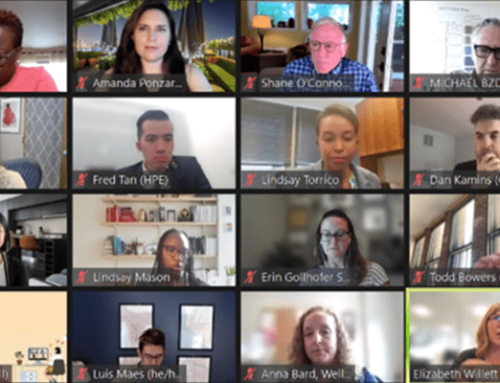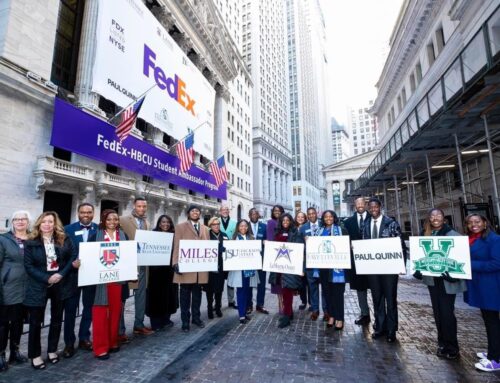By: Jessica Rafuse, Senior Program Manager for NGO Engagement within the Office of the Chief Accessibility Officer at Microsoft;
Ready, Set, Hire!
– A recently released study of 140 U.S. companies found that those who embrace best practices for employing and supporting more persons with disabilities in their workforce outperform their peers. These companies are not merely compliant or acting out of perceived obligation, but are excitedly embracing the advantages that come with employing more creative, industrious and well-rounded people.
Making a positive impact on the unemployment and underemployment rates for people with disabilities, however, is a challenge that requires a collaborative effort.
Last November, Microsoft gathered experts and influencers from over 75 different organizations from across the Seattle-area for the second annual Microsoft DisAbility Employment Symposium. The event generated discussion on common challenges, lessons learned, and innovation in disability employment. We celebrated people with disabilities and committed to our ongoing efforts towards inclusion.
Below are three steps your company can take to continue the journey to positively impact disability employment.
1. GET READY: Nurture a culture of inclusion
Celebrating people with disabilities within your organization will ignite a sense of disability pride that results in a more inclusive and productive workplace. Here are a few things to consider:
- Recognize Talent: People with disabilities are an asset to the workplace. From innovation to troubleshooting to project management skills, each individual with a disability brings with them a unique set of skills that they have honed as a result of their disabilities. Remember that 70% of disabilities are non-apparent, so you likely have someone with a disability in your workplace today who is already adding value to the team.
- Create opportunity for connection: To build a culture you first need to build a community. Our Disability Employee Resource Group is a long standing group of employees, who have helped to define disability inclusion at Microsoft. If you are looking for a first step in this journey, start here. Just a few passionate employees with common experiences can support your business in the creation of truly inclusive culture.
2. GET SET: Invest in accessibility
Embedding accessibility into the fabric of your company is key to recruiting and retaining talent with disabilities:
- Be creative, be frugal, and be resourceful. “Investment” does not always mean “budget” allocation. Utilize resources that are available for free on public platforms. For example, watch Introduction to Disability and Inclusion to learn the basics, and educate your colleagues by using Microsoft Accessibility Training Resources particularly our At a Glance series, which provides bite-sized accessibility trainings.
- Leverage technology to empower people with disabilities. The role of technology is indisputable in empowering all people, including people with disabilities. From accessible career websites to assistive technologies like screen readers (e.g., Narrator and JAWS) for people who are Blind or Low Vision, accessible technology can make your company more attractive to talent with disabilities. As an individual, you also have a role in making your workplace more accessible with a few simple tricks. Try using the Accessibility Checker before sending an email or turn on Translator within PowerPoint during your next meeting. If you want to know more about accessibility features check out our Accessibility Feature Sway and at the Microsoft Accessibility Site.
- Accessibility in all levels of your company. Senior leaders are immensely influential as accessibility champions. Ignite your leader’s passion for accessibility by sharing personal stories about how your company’s business has positively impacted the lives of people with disabilities. Microsoft CEO Satya Nadella provides six accessibility feature demos: Inclusive Presentations, Seeing AI, Xbox Adaptive Controller, Learning Tools, Soundscape, and Eye Control.
3. HIRE: Hire someone with a disability today!
While nurturing your company culture and integrating accessibility into all that you do, actively seek candidates with disabilities to join in your journey. People with disabilities are just the problem solvers you need to provide feedback on your efforts as you strive for improvement.
- Transparency in recruiting: candidates appreciate transparency in your company’s inclusion efforts and clear timelines on the accessibility journey. For hiring managers, open communication is key to confront bias and to allow for discussion around your company’s policies for workplace accommodations and benefits.
- Identifying gaps: partner with your internal talent acquisition team, HR, legal, or other stakeholders to understand the process for working with candidates with disabilities. Ensure that your organization has a process for soliciting and responding to requests for accommodations. Offer trainings to all members of a recruiting ecosystem and co-create resource guides that are specific to your business. Don’t wait for the processes and policies to be perfect.
- Resources abound: check out the Disability Equality Index (DEI), which serves as an neutral benchmarking tool to evaluate, measure, and improve your company’s disability inclusion efforts. We are sharing even more of our learnings through our Disability Inclusion Sway and the Microsoft Inclusive Hiring Site.
Above all, be curious, be bold, and be collaborative. Hire someone with disabilities and they will guide you along the way.

Jessica Rafuse, Senior Program Manager for NGO Engagement within the Office of the Chief Accessibility Officer at Microsoft
Jessica is responsible for Microsoft’s strategic engagement with organizations that focus on people with disabilities and accessibility. Jessica holds a position on the Board of Directors for Disability Rights Washington.







